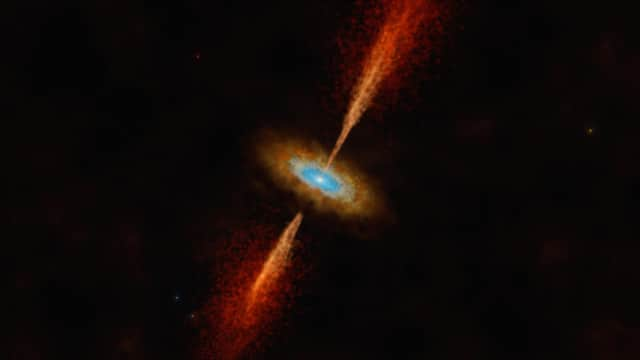Astronomers hail discovery of a planet-forming disk beyond the Milky Way as a 'special moment'
This article contains affiliate links. We may earn a small commission on items purchased through this article, but that does not affect our editorial judgement.


Finding a disc of gas and dust around a young star has been hailed as a "special moment" as astronomers find the first extragalactic accretion disc outside the Milky Way - which has planet-forming properties.
An international team of experts led by Durham University reported the detection of the star and its rotating disc structure around 163,000 light years from Earth, sitting in the neighbouring galaxy called the Large Magellanic Cloud.
Advertisement
Hide AdAdvertisement
Hide AdThe event was observed in a stellar nursery known as N180 – where many other new stars are actively forming. The structure is known as the accretion disc – which is formed by material such as gas, dust, and other debris gradually being drawn towards the growing star due to gravitational forces.
The star, dubbed as HH 1177, and its disk is less rich in dust which will allow astronomers to observe its central star and possibly even watch the early stages of planet formation - which is the same process our solar system underwent 4.5 billion years ago.
The event, reported in the journal Nature, was detected using the Atacama Large Millimetre/submillimetre Array (Alma) in Chile. Lead author Dr Anna McLeod, from the Centre for Extragalactic Astronomy at Durham University, said: “When I first saw evidence for a rotating structure in the Alma data, I could not believe that we had detected the first extragalactic accretion disc; it was a special moment. We know discs are vital to forming stars and planets in our galaxy, and here, for the first time, we’re seeing direct evidence for this in another galaxy.”
The astronomers managed to find evidence of this disc by measuring the movement of the dense gas around the star. The disc rotates faster closer to the centre than the outer edge and researchers say this difference in speed is the “smoking gun” that confirms the presence of an accretion disc.
Advertisement
Hide AdAdvertisement
Hide AdThe star is thought to be massive, around 15 times the mass of the Sun, however, massive stars can be challenging to observe in the Milky Way and are often obscured from view by the dusty material surrounding them.
However, the material from which new stars are born in the Large Magellanic Cloud is fundamentally different from that in the Milky Way, allowing astronomers an unobstructed view of star formation. The team said studying star and disc formation across different galactic environments will help astronomers understand more about how stars are formed.
Dr McLeod said: “Being able to study how stars form at such incredible distances and in a different galaxy is very exciting.”
Comment Guidelines
National World encourages reader discussion on our stories. User feedback, insights and back-and-forth exchanges add a rich layer of context to reporting. Please review our Community Guidelines before commenting.
